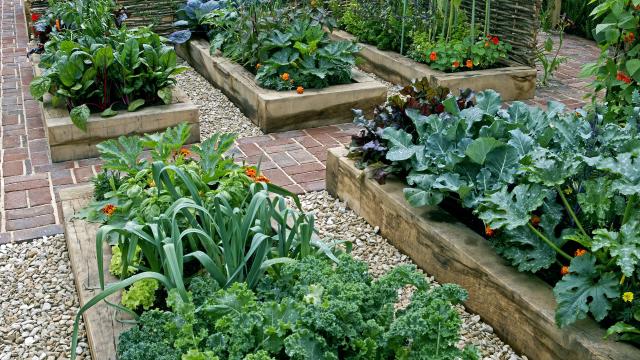Over time, you’ll get to know your garden like a close friend. Where the high parts are that dry out, the low parts that are always waterlogged, which parts get early sun, and which beds the squirrels love the most. Your garden will also change year to year as trees grow, trellises get replaced, and buildings grow upwards around you. There are always going to be shadier spots in your garden, and while most vegetables we think of in summer—tomatoes, peppers, cucumbers and pumpkins—live for the sunshine, you can take advantage of the darker areas to grow some plants that might get sun-burned.
What does “shade” really mean?
Before we get started, it’s helpful to understand what we mean when we say “partial shade” versus “full shade.” Generally speaking, “full sun” is at least six hours of full-on sunshine a day. Partial shade is three hours or less of sunlight, and full shade is anything less than that, but it’s important to understand the caveat of “dappled light”. Imagine a tree with its overhanging branches. It will mostly shade what is below it, although some sunlight peeks through the leaves, and as the sun moves, so do those sun spots. This is dappled light.
Pay attention to your yard to find out what kind of light you have
I figured by now someone had invented a sensor to measure how much light an area of your garden gets, and though I haven’t tested it, there is at least one on the market. But the easier way to understand the light in your garden is to just watch it. I have a map of my beds, and I pick a day in April or May and spend the day checking in on the garden every few hours. I check at 8am, noon, 4pm, and 8pm and mark on my map which beds are getting light or shade at each of those checkpoints. While the sun will move lower or higher in the sky based on time of year, it still passes over the same rough path from east to west. You can use this to figure out where your shadier beds are. Also, you can introduce shade by using shade cloth, or planting trees. I have one bed that was my shady spot the last 15 years, until the wind took down the shade tree a few weeks ago, so I’ll be using shade cloth this summer. Gardens change, and you just have to pay attention when they do.
What grows well in partial shade
We’re all so busy in summer with plants that really love sun, like tomatoes and corn, that you might not think about plants that bolt or do less well, like broccoli, cauliflower and cabbage. A little shade can make growing them in summer possible. In fact, think about all your spring and winter vegetables, and they’ll make up your shady summer plants. Peas are usually done by June because of the heat, but the shade can buy them some more time. Brussels sprouts have be planted in early summer because they take so long, but they don’t love the heat, so I’ve always planted them under partial shade. While not absolutely necessary—so you shouldn’t create shade for them—other plants that can tolerate some shade are spring onions, radishes, celery and carrots.
Some plants crave even less sun
More shade also means less heat, and some plants are just really sensitive to bolting. Growing spinach or bok choy in summer is almost a fool’s errand unless you have a spot with great shade for most of the day. All your tender, leafy greens, including tatsoi, mizuna, napa cabbage, even lettuce, can benefit from shade. If you have extreme heat, it won’t save your plants, but otherwise, it can help to prolong your season.
What to do with dappled light
Perhaps one of the best investments I made in my garden was establishing an area dedicated to really tender and sensitive plants like mushrooms, ramps and fiddlehead ferns. I had a narrow strip of land between my house and my neighbors and overhanging trees creating the perfect dappled light. Nothing else was going to grow there, but dappled light is precisely what mushrooms need. You can grow mushroom logs, or just put down mushroom spawn on wood chips. Winecaps turn out to be a fantastic spawn for general shrooming, and for logs, you can look at shiitakes. You can also purchase ramps for planting from Etsy (look for ethical harvesters) and fiddleheads, which chefs go nuts for each spring, are just baby fern stems, and ferns love shade. As the mushroom logs deteriorate, they become nurse logs, which will provide housing for and feed the kinds of beneficial insects you want in your yard. The mycelium from the mushrooms create good soil and amazing compost. If you can throw a water feature back there, you might attract some frogs.
Learning to appreciate the garden you have, and trying to work with what’s there is one of the joys of growing. Your shady spots might look like a challenge, but if you change your mindset to appreciate them as the gift they are, you’ll be able to grow a much fuller ecosystem of edibles.

Leave a Reply
You must be logged in to post a comment.